How to Grow Lettuce & Salad Greens in a Container Garden
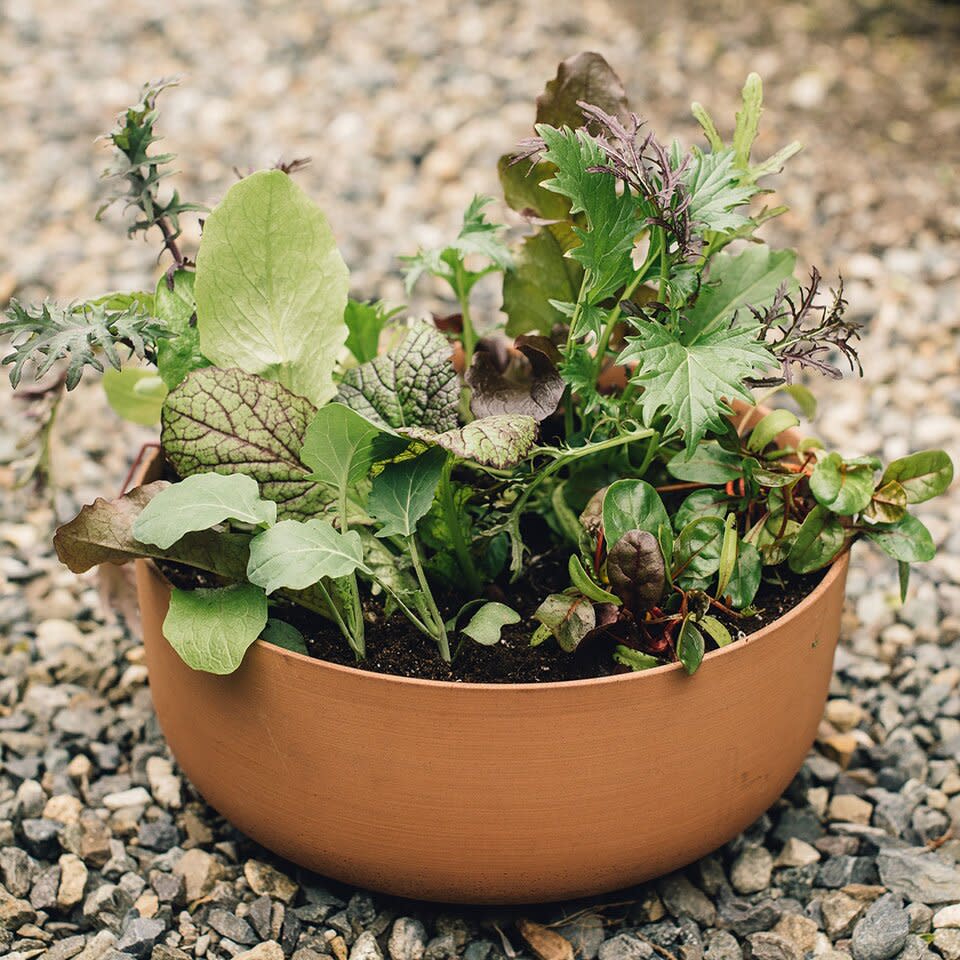
If you've never grown vegetables before and always wanted to grow your own food, but don't have the time or space for a full-size outdoor garden–container gardening is a good place to get started. You don't need a lot of space, and it requires a relatively low level of commitment: You can grow your own greens in a window box, on a deck or right on your countertop–no weeding required!
Related: 6 Foolproof Herbs for Beginner Gardeners
With the right materials and a little know-how, you're just weeks away from fresh, homegrown salad greens at your fingertips. Learn how to grow salad greens in a container garden-both indoors and out, plus how to care for your salad container garden. Get answers to your container garden questions in our FAQ section, and learn what types of salad to grow in a container. Plus, see delicious salad recipes to help you enjoy your bounty.
You Will Need:
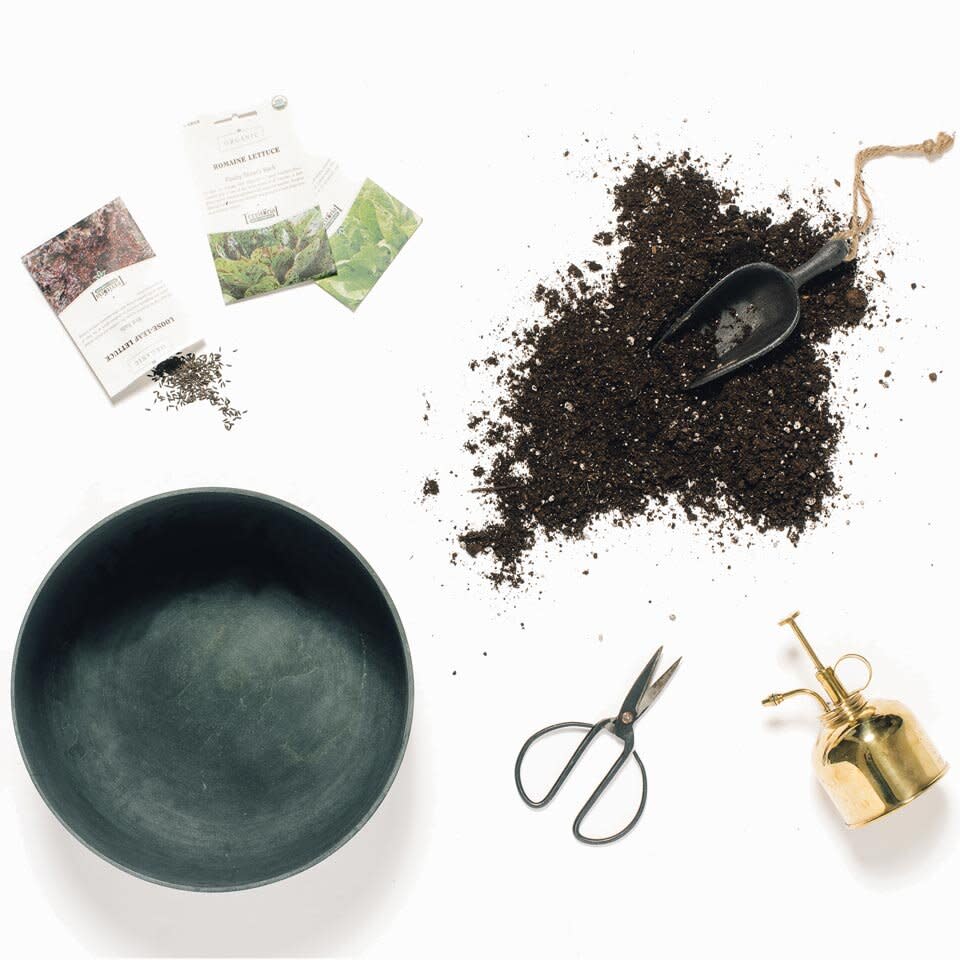
Photo: AJ Ragasa (Glasswing)
Plastic, glazed or metal planter
Organic soilless potting mix
Seeds
Spray bottle
Kitchen shears
Step 1: Choose your container.
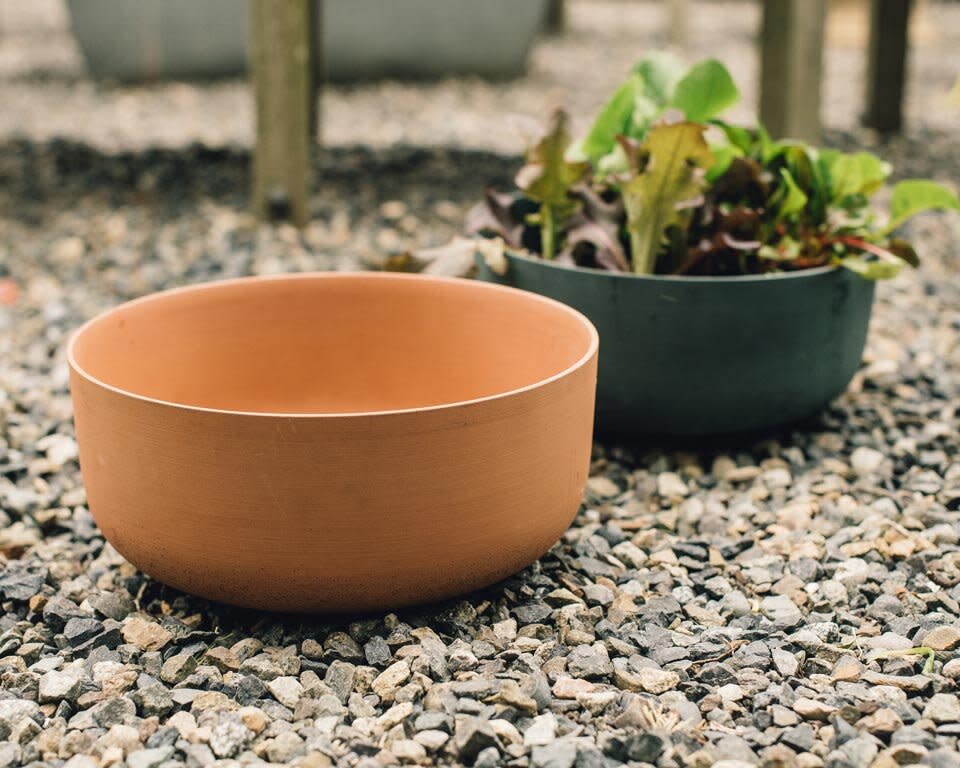
Photo: AJ Ragasa (Glasswing)
Drainage is essential, so select a pot with holes in the bottom so there's somewhere for excess water to go. If the container does not have drainage holes, drill several into the bottom. Plastic pots, glazed or metal pots are preferable to terra-cotta, which pulls away moisture and causes soil to dry out faster. Salad greens do not have deep roots, so you don't need large pots; a medium-size vessel will do. If you're reusing an old container, wash it thoroughly before you start planting.
Step 2: Add potting mix.
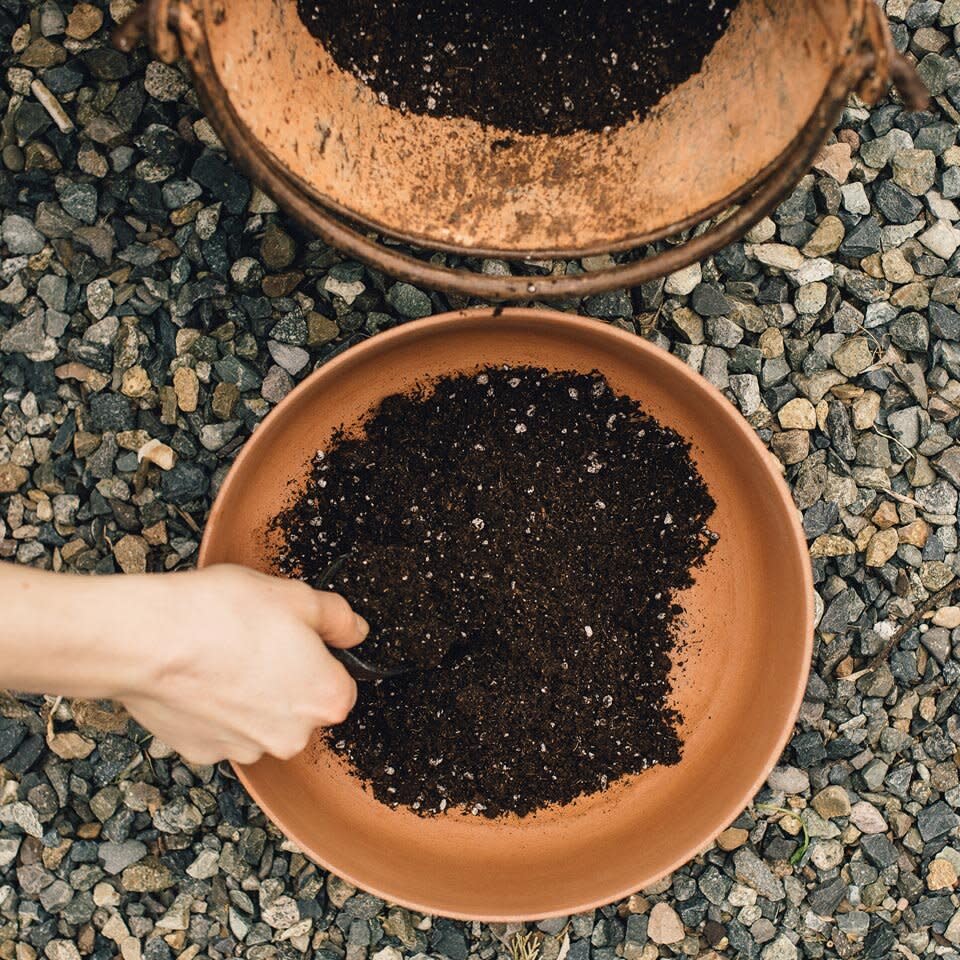
Photo: AJ Ragasa (Glasswing)
Fill your container with an organic soilless potting mix, as regular potting soil is too dense and will prevent plant roots from spreading properly to allow vegetables and herbs to grow. With a potting mix, there's no need for organic fertilizer.
Step 3: Plant your seeds.
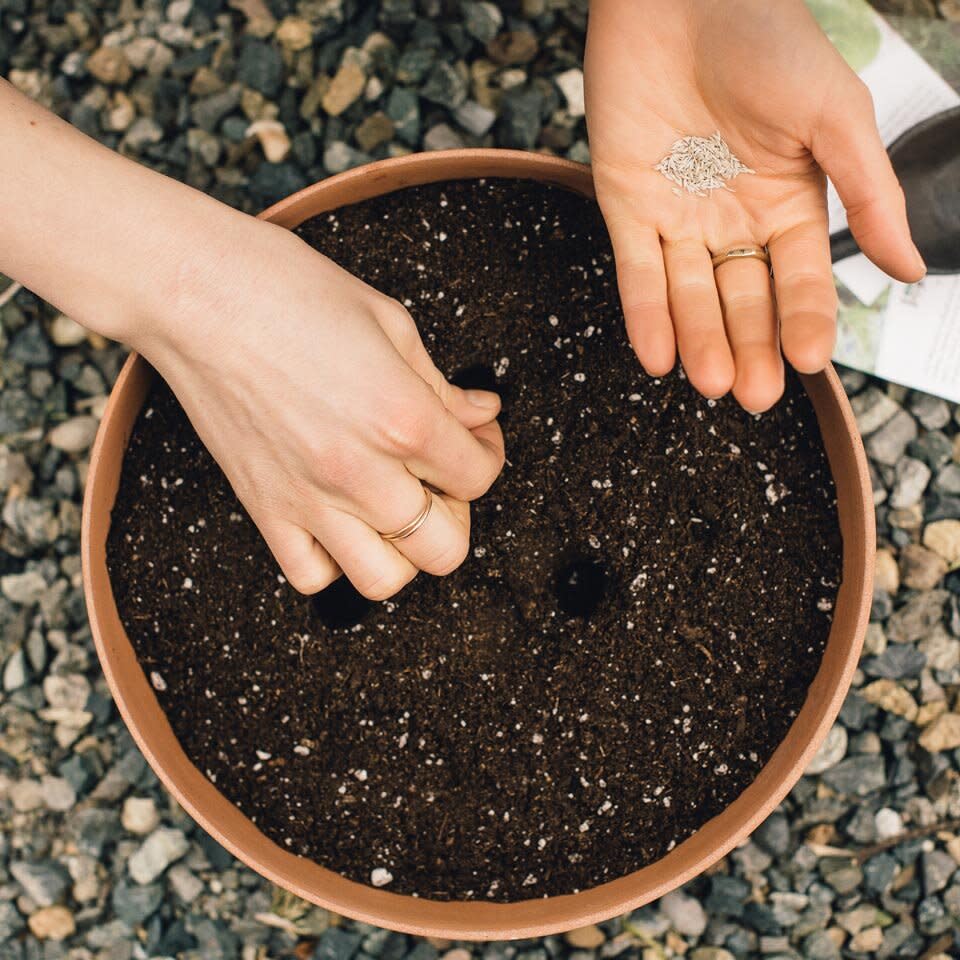
Photo: AJ Ragasa (Glasswing)
One at a time, pinch seeds between your fingers and gently place them in the soil. Leave approximately 1/2 inch between seeds. Cover the seeds with a scant 1/4 inch of soil.
In general, greens are a cool-season crop. Plant in the early spring, pause production during the hottest months, then plant again in late summer for a second harvest in fall. Check your seed packet for exact timing.
As far as sun goes, lettuce prefers moderate sun so put your pots in a place that gets a lot of sun, but not full sun.
Step 4: Daily (or almost daily): Water, water, water.
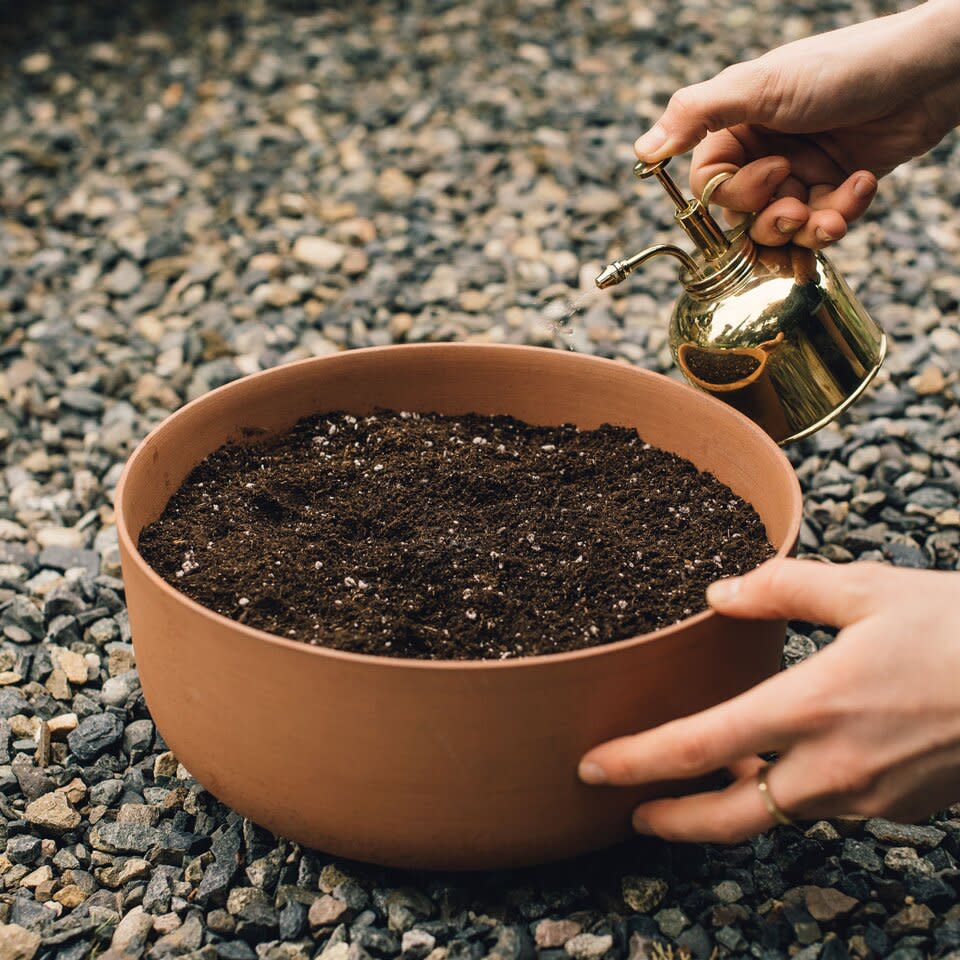
Photo: AJ Ragasa (Glasswing)
Keep the soil consistently moist but not waterlogged. A simple spray bottle will help you deliver just the right amount of moisture without disturbing the newly planted seeds.
Step 5: Thin as needed.
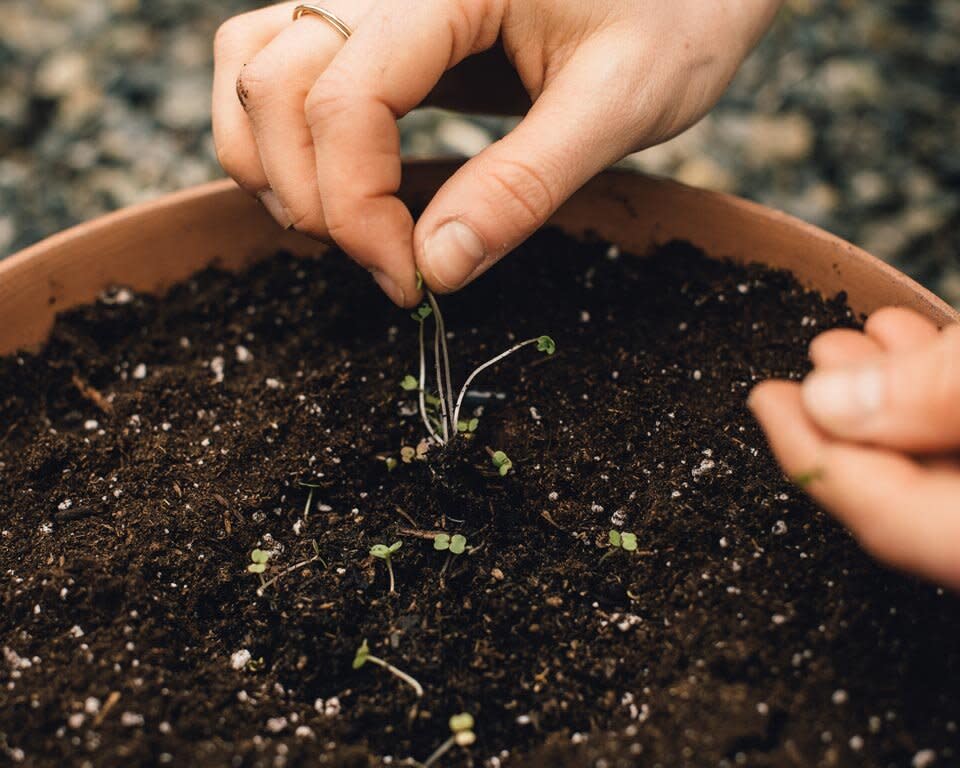
Photo: AJ Ragasa (Glasswing)
Once sprouts emerge, in 2 to 4 weeks, you may find your planter box a bit overcrowded. Remove seedlings as needed to ensure each plant has enough room to grow, per the instructions on your seed packets.
Step 6: Harvest Your Greens
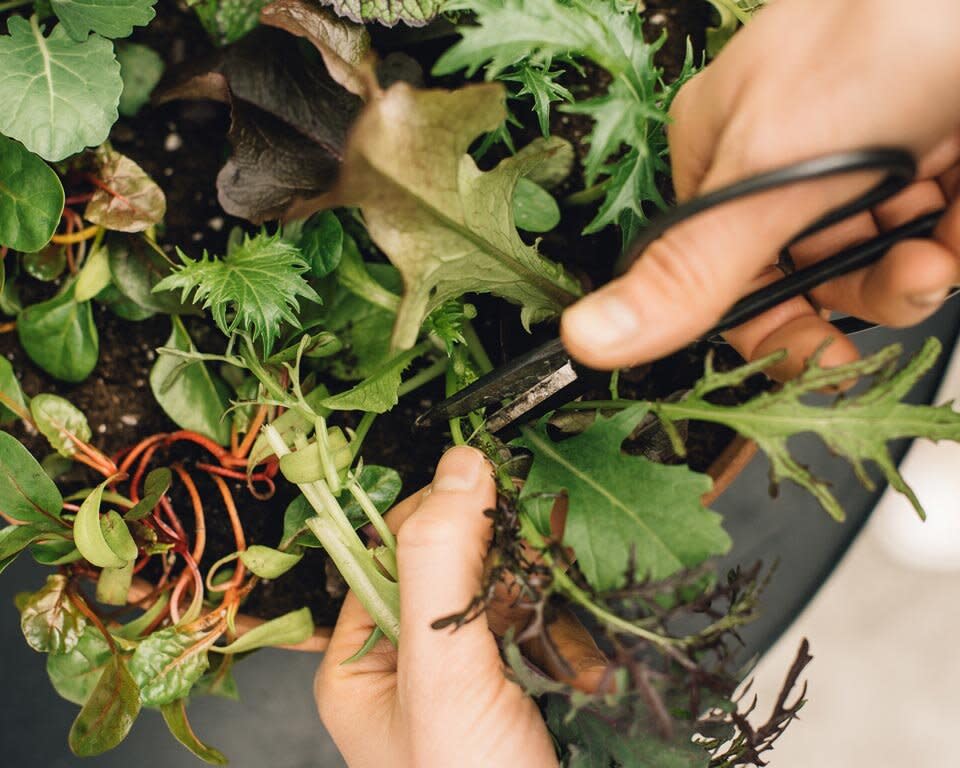
Once your greens have reached their perfectly crisp-yet-tender peak, either remove the entire plant at the base or cut the outer leaves with kitchen shears and leave the center intact so new leaves can grow. Maturation times vary widely by variety, anywhere from 45-100 days. Consult your seed packet for a more accurate time frame, but, essentially, you can begin harvesting whenever leaves begin to form. For the freshest, crispest lettuce, harvest early in the morning before the sun begins to wilt the greens.
Wash your greens right before you plan to eat them. Soak leaves in a bath of cold water for about 5 minutes. Swirl the leaves gently with your hand to loosen the debris and then lift them out of the water and into a salad spinner and spin to dry.
Step 7: Toss Up a Delicious Salad and Enjoy!
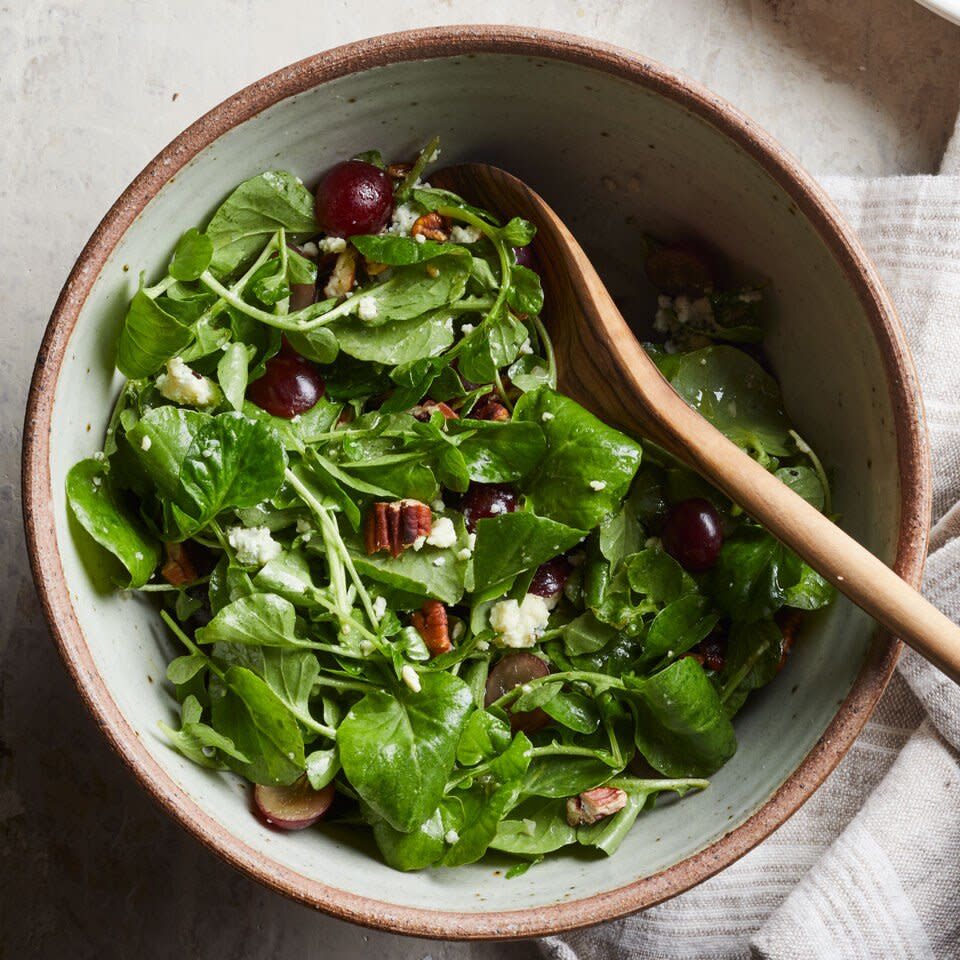
Pictured Recipe: Watercress Salad with Grapes, Blue Cheese & Pecans
Mix and match your salad greens for a well-balanced combination of textures-don't be afraid to experiment! Try buttery romaine with peppery arugula; tangy chard with a neutral leaf lettuce or the nutrient-packed pair of spinach and kale. Allow the flavors of your carefully homegrown greens to shine-don't douse them in too much dressing or overwhelm them with add-ins. Toss with a simple vinaigrette, or try one of these recipes where greens steal the show:
Salad Container Gardening FAQs
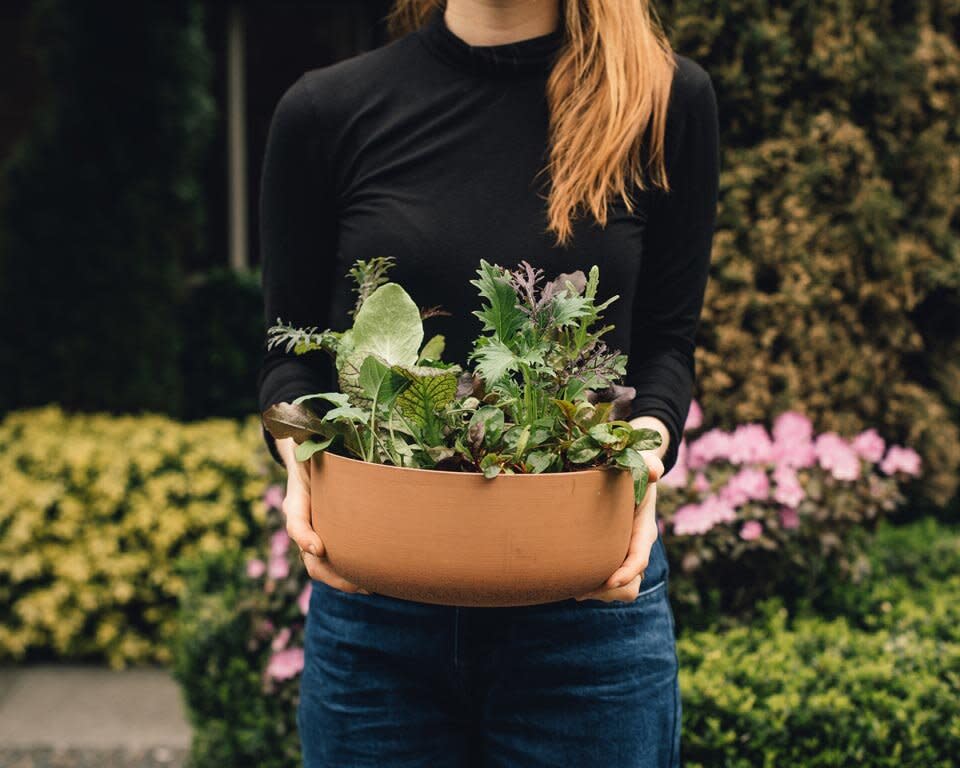
Photo: AJ Rasa (Glasswing)
Where should I purchase seeds?
Garden centers will likely carry standard grocery-store varieties, but you can find more unique, heirloom varieties at places like Seed Savers Exchange, The Cook's Garden (a division of Burpee), Johnny's Selected Seeds, Baker Creek Heirloom Seeds and High Mowing Organic Seeds.
What varieties should I plant?
The types of salad greens you plant are really a matter of personal preference, but we recommend combining several types of greens in one container to ensure you have a mix of colors, textures and flavors. Our top picks:
Flashy Trout Back Lettuce: With medium-green leaves covered in red speckles, this dwarf variety known for its buttery flavor is a perfect choice for containers.
Red Russian Kale: One of the most tender varieties of kale, its colorful leaves are an attractive option for container gardens and salads alike.
Rouge D'Hiver Romaine: This French heirloom variety packs more flavor and color than many other romaine varieties.
Oak Leaf Lettuce: Add visual interest to your container with this variety whose leaves (as the name implies) are shaped like oak leaves. It grows quickly and has a mild flavor, making it a nice companion to stronger varieties.
Wild Rocket Arugula: This variety, with is shorter stature and stronger flavor than classic arugula, is a natural choice for a salad-green container garden. With Italian origins, it's perfect atop pizza or as the base for pesto.
Related: 9 Salad Greens You Should Try
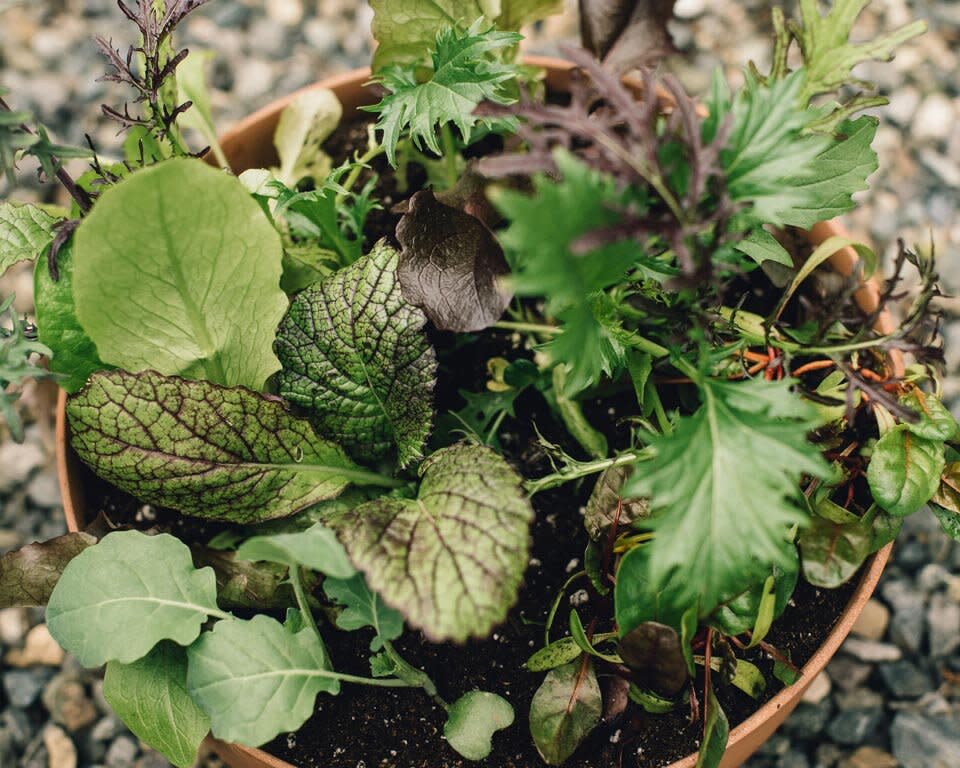
Photo: AJ Rasa (Glasswing)
How do I grow salad greens indoors?
Growing salad greens indoors can be a bit tricky unless you have a grow light-but a sunny window may yield good results. Follow the same steps listed above.
Can I grow salad greens in containers year-round?
Technically yes-but you may not always love the results. You can carry your harvest through the winter with the help of a grow light or sunny window indoors. However, greens may be slow to grow with sunlight only. If you're eager to start planting in early spring, you can get a jump start by starting seeds indoors and then moving them outside when weather permits. In most places, the hot summer sun causes greens to bolt (go to seed) and become bitter, although placing your container in shade may help.
How do I protect my salad greens from pests?
If you live in an area with hungry rabbits, consider a container too tall for them to reach, or place the container on your deck or tabletop. To prevent damage from other pests such as insects, cover your container with a fine-mesh netting.
What else can I plant in a container?
You can grow vegetables of all types in containers! From pole beans to tomatoes, even herb gardens can be planted in a container.
Watch: How to Make Homemade Vinaigrette
Related: Homemade Dressings That Will Make You Love Salad Again

